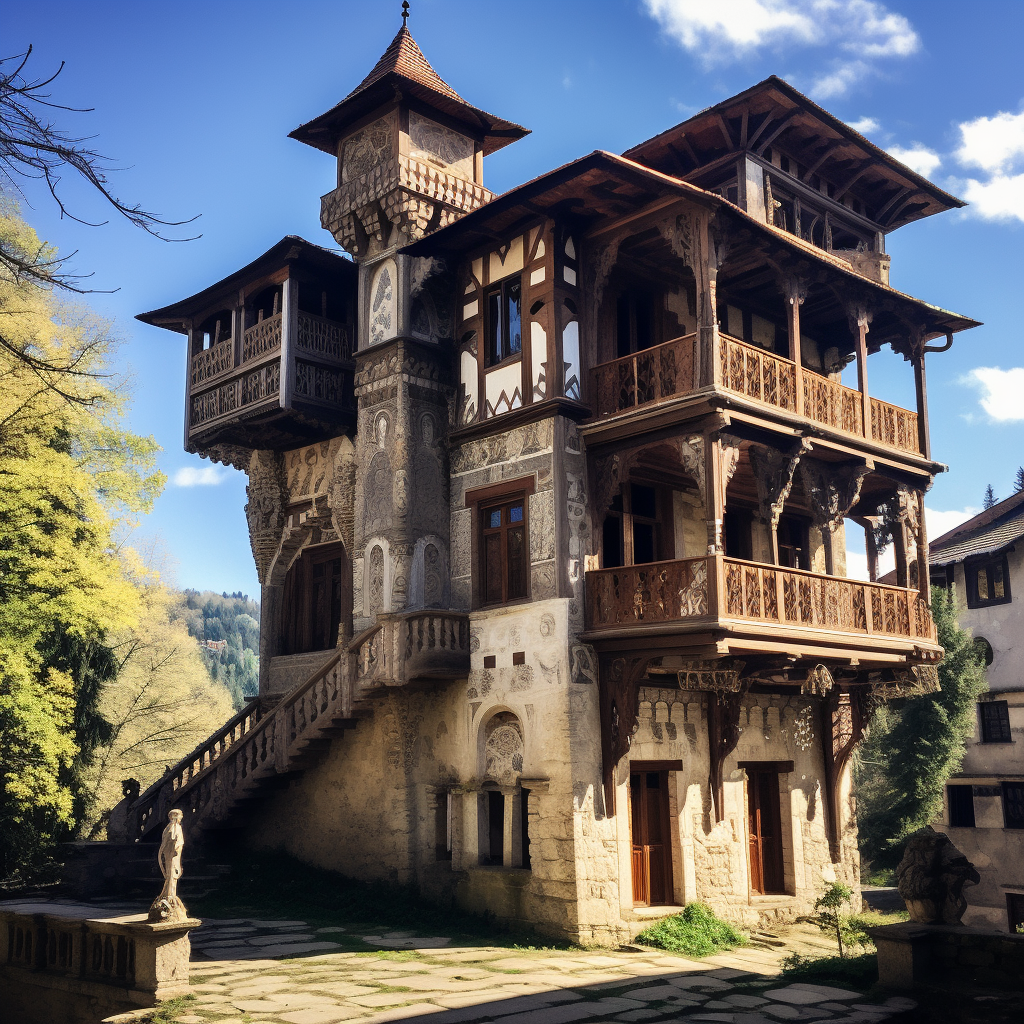Architectural heritage of Montenegro

Breaking News:
Kathmandu Nepal
Thursday, Jan 8, 2026

The architectural heritage of Montenegro is unique and diverse, reflecting the complex history of a country located at the crossroads of different cultures and civilizations. From ancient times to the present day, the territory of Montenegro has been under the influence of the Romans, Byzantines, Ottomans, as well as Slavic peoples, which is reflected in its architecture. Medieval fortresses located on the hills, Byzantine basilicas and Ottoman fortresses tell of the numerous conquest and defensive battles that took place in this land.
With time architectural appearance of Montenegro continued to evolve, acquiring Venetian Gothic and Baroque features, especially in coastal towns such as Kotor, which is a UNESCO World Heritage Site. Kotor and its surroundings offer a unique combination of medieval architecture and Venetian influence, making it one of the most beautiful historical towns on the Adriatic.Architecture of Montenegrois a living history textbook that allows you to understand and experience the eras that shaped the modern face of this country.
Religious buildings in Montenegro reflect the deep spirituality of the people and the historical diversity of beliefs that permeate the country’s culture. Churches and monasteries in Montenegro are not only places of worship, but also guardians of historical memory, culture and art. Many of them were founded in the Middle Ages and are of great historical and architectural significance. An example is the Ostrog Monastery, carved into the rock and visible from afar. It is a place of pilgrimage for believers from all over the world, famous for its healing shrines and unique architecture.
In addition to Orthodox churches, in Montenegro you can also find Catholic churches and mosques, reflecting the centuries-old coexistence of different religions and cultures. For example, the city of Bar is home to one of the oldest mosques in the country, demonstrating Ottoman influence on the architectural appearance of the region. These religious buildings not only serve as places for religious ceremonies, but are also important cultural centers where traditions are preserved.
The fortresses and castles of Montenegro represent an important part of the historical and cultural heritage of the country.Every fortress and castle carries unique stories about great battles, legends and culturaled traditions, making them an integral part of the Montenegrin landscape.
Urban planning in Montenegro is characterized bya unique combination of historical eras and cultures, which is reflected in the diversity of architectural styles of its cities. From the ancient fortified walls of Kotor, a UNESCO World Heritage Site, to the narrow cobbled streets and ancient Baroque and Renaissance buildings of Budva and Ulcinj, Montenegro’s cities showcase their centuries-old history. These urban landscapes not only preserve traces of the past, but also actively incorporate elements of modern urban planning, creating a harmonious combination of old and new.
Modern urban planning projects in Montenegro strive to take into account the historical context, while introducing innovative solutions to improve the quality of life of citizens. The development of infrastructure, the creation of green areas and pedestrian spaces, as well as the restoration of historical buildings takes place taking into account modern environmental and social requirements. This approach helps preserve the unique appearance of the cities of Montenegro, while making them more convenient and attractive for residents and tourists.
Modern architecture in Montenegro reflects the country’s desire for innovation and technological development, while maintaining respect for its historical and cultural heritage. New architectural projects such as museums, public buildings and residential complexes showcase bold architectural forms, sustainable materials and modern construction technologies. These structures not only enrich the cityscapes, but also contribute to the development of tourism and culture, making Montenegro attractive to the international community.
Particular attention in modern architecture Montenegro pays attention to sustainable development and integration of green technologies. Green building projects, including the use of renewable energy sources and green roofs, are becoming increasingly popular. This underlines the country’s commitment to creating healthy and environmentally friendly living environments, focusing on both the aesthetic appeal and functionality of new buildings.
The protection and restoration of architectural heritage in Montenegro plays a key role in preserving the historical identity of the country. The government and local organizations are actively working on projects to restore historical buildings, forts and churches, aiming to preserve them for future generations. These efforts not only help maintain cultural heritage, but also promote tourism by providing visitors with an opportunity to experience the country’s rich history and architecture.
In recent years, special attention has been paid tothe use of modern technologies in the restoration process, which allows for more accurate restoration of historical structures, while minimizing interference with the original structure. Preservation programs also include educational components aimed at increasing public awareness of the importance of historic preservation. These measures allow a harmonious combination of past and present, emphasizing the uniqueness and diversity of Montenegrin culture.
Answer 1:The architecture of Montenegro was influenced by the Romans, Byzantines, Ottomans and Slavic peoples.
Answer 2: Ostrog Monastery, carved into the rock, is known as a place of pilgrimage with healing shrines.
Answer 3:Modern urban planning in Montenegro takes into account the historical context and includes innovative solutions to improve the quality of life, creating a harmonious combination of old and new.
Answer 4:Contemporary architecture in Montenegro is dominated by bold architectural forms, environmentally friendly materials and technologies, as well as sustainable development and the integration of green technologies.
Answer 5:In Montenegro, modern technologies are used to protect and restore architectural heritage, minimizing interference with the original structure, as well as educational programs to raise public awareness.